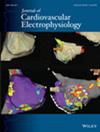Factors Influencing Contact Force in Robotic Magnetic Navigation Ablation
Abstract
Introduction
Stability of catheter-tissue contact in the robotic magnetic navigation (RMN) system is one of the key features that distinguishes this system from manually guided catheters. Numerous studies have shown that contact force (CF) in manually controlled catheters is as crucial for forming an optimal lesion as the duration of application or power. Catheters used in the RMN system lack a quantitative method for intraoperative monitoring of this parameter. Our study aims to partially address this gap in scientific knowledge.
Methods
We conducted a total of 1200 CF measurements using the RMN system (Stereotaxis, St. Louis, MO, USA), a magnetic-guided 8 Fr RF ablation catheter (THERMOCOOL RMT Catheter, Biosense Webster, Irvine, CA, USA) inserted through a long sheath (SR0, Abbott Cardiovascular, Nathan Lane North, Plymouth, MN, USA), and a precision jewelry scale (IKEME, Guangdong, CN). We analyzed the impact on the obtained CF values of four different magnetic field vectors (transverse, sagittal, caudal, and cranial), two field strengths (0.1T and 0.08T), and three catheter extension configurations from the long sheath (with Position 1 being the least extended and Position 3 the most extended).
Results
The contact force values varied significantly across the different magnetic field vectors, field strengths, and catheter extensions from the vascular sheath.
The greatest differences in achieved values were observed across the different magnetic field vectors in the Position 1, ranging from 3.52 ± 0.1 g (caudal plane) to 15.15 ± 0.05 g (cranial plane) at 0.08 Tesla (T) field strength (p < 0.001), and from 4.10 ± 0.06 g (caudal) to 15.01 ± 0.07 g (cranial) at 0.1 T, p < 0.001. Differences in other vectors reached approximately 20%.
The highest CF values were obtained in Position 1, intermediate values in Position 2, and the lowest in Position 3. An exception was the transverse vector, where, particularly with a magnetic field of 0.1 T, more similar values were observed across Positions 1–3, with respective values of 8.61 ± 0.14 g, 9.36 ± 0.06 g, and 8.31 ± 0.05 g.
A stronger magnetic field (0.1 T compared to 0.08 T) resulted in higher CF values, especially during measurements in the transverse vector. This effect was most pronounced in the most extended catheter from the sheath - Position 3 (with respective values of 4.54 ± 0.09 g vs. 8.31 ± 0.05 g, p < 0.001). In the sagittal, cranial, and caudal vectors, the differences were less noticeable.
Conclusion
Different magnetic field vectors, catheter extensions from the sheath, and magnetic field strengths result in varying contact force values. For effective radiofrequency ablation lesions, these factors should be considered alongside power, duration, and other established parameters.

 求助内容:
求助内容: 应助结果提醒方式:
应助结果提醒方式:


